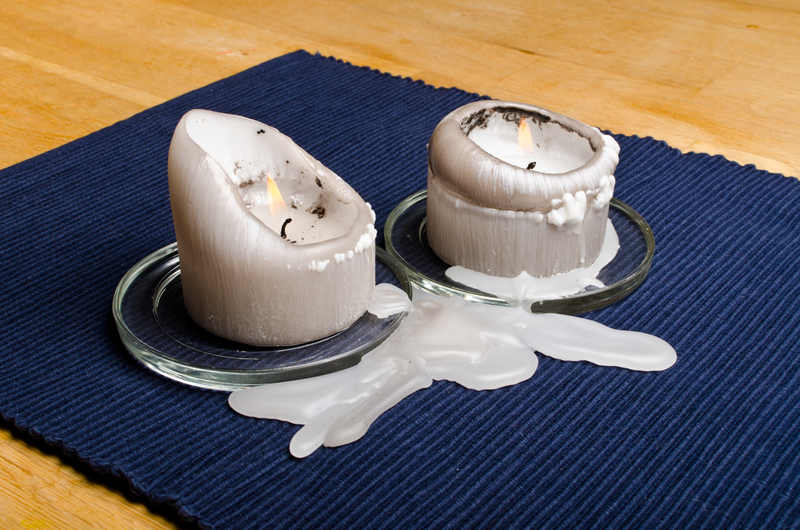Eradicate Mould on Window Sills: A Simple Cleaning Method
Posted on 02/07/2025
Eradicate Mould on Window Sills: A Simple Cleaning Method
Mould on window sills is a common and frustrating problem for homeowners and renters alike. Not only is mould unsightly and capable of damaging window frames, but it can also pose a serious health risk, particularly for individuals with allergies, asthma, or weakened immune systems. The good news is that you don't need to live with black mould on your window sills or invest a fortune to get rid of it. In this comprehensive article, you'll discover an effective, simple cleaning method to eradicate mould on window sills, as well as crucial prevention tips to keep mould from returning.

The Importance of Removing Mould from Window Sills
Whether you notice black spots on window sills or a persistent musty smell, mould is more than just an eyesore. Let's highlight why you should take action immediately:
- Health risks: Exposure to mould spores can cause allergies, respiratory issues, and exacerbate asthma.
- Structural damage: Prolonged mould growth can damage the window sill materials and surrounding walls.
- Odour: Mould emits a musty smell that can make your home unpleasant.
- Property value: Visible mould can lower your property's value and complicate selling.
What Causes Mould on Window Sills?
Understanding the causes of mould is crucial in both eradicating existing growth and preventing future outbreaks. The most common reasons for mould growth on window sills include:
- Condensation: Windows are often colder than the ambient room temperature, leading to water condensation. This creates a moist environment ideal for mould growth.
- Poor ventilation: Insufficient airflow traps moisture around windows, providing the perfect breeding ground for mould.
- Leaky windows: Faulty window seals or frames may allow water ingress, keeping window sills persistently damp.
- Neglected cleaning: Dirt and debris can trap moisture, further encouraging mould to develop.
Preparing for Mould Removal: Essential Safety Tips
Safety should always come first when dealing with mould, especially if you're dealing with significant growth. Here's how to proceed safely:
- Wear gloves: Use disposable or rubber gloves to avoid skin contact with mould and cleaning solutions.
- Wear a mask: Use a respirator mask rated for small particles to avoid inhaling mould spores.
- Protect your eyes: Goggles will protect your eyes from splashes and airborne spores.
- Ventilate: Open windows and doors to encourage airflow and help disperse spores and fumes.
- Keep pets and children away: Ensure they are not in the room during cleaning.
Simple Cleaning Method to Remove Mould from Window Sills
Ready to tackle that unwanted black or green mould? Follow this easy step-by-step guide to eliminate mould on your window sills.
What You Will Need:
- Protective gloves, mask, and goggles
- Spray bottle
- Soft-bristled brush or old toothbrush
- Microfiber cloths or disposable paper towels
- White vinegar (the star ingredient!)
- Baking soda (optional for stubborn spots)
- Warm water
- Dish soap (optional)
Step 1: Dry Dust and Prepare the Area
- Begin by removing any loose dust, debris, and dirt from the window sill using a dry microfiber cloth or brush. Dispose of this cloth or wash it thoroughly after use.
- If you see visible mould colonies, gently remove surface mould using a disposable paper towel. Dispose of the towel immediately.
*Tip: Before applying any cleaning solutions, open the window to increase ventilation.
Step 2: Apply White Vinegar
- Pour undiluted white vinegar into a spray bottle.
- Generously spray the affected areas on the window sill and frame.
- Let the vinegar sit undisturbed for 1 hour. Vinegar is a natural and effective mould killer.
Step 3: Scrub and Remove Mould
- After an hour, use a soft-bristled brush or old toothbrush to scrub away the mould.
- Pay attention to corners and crevices where mould can hide.
- Wipe up the loosened mould residue with a damp microfiber cloth.
- Rinse the cleaning cloth in hot water between wipes or use disposable towels.
Step 4: Tackle Stubborn Spots
- If any mould spots on the window sill remain, make a paste using baking soda and a few drops of water.
- Apply the baking soda paste to the affected spots and let it sit for 10-15 minutes.
- Scrub with the brush, then wipe clean with a damp cloth.
Step 5: Dry Thoroughly
- Mould loves moisture, so use a dry microfiber cloth or towel to absorb all remaining dampness from the window sill.
- If possible, leave the window open for several hours to allow the sill to dry completely.
Congratulations--you have successfully eradicated mould on your window sill using these simple steps!
Alternative Cleaning Solutions for Mould on Window Sills
While vinegar is a highly effective and eco-friendly choice, there are other options if you require a stronger method or prefer a different approach:
- Hydrogen Peroxide: Use 3% hydrogen peroxide in a spray bottle, apply to the mouldy area, and let it sit for 10-15 minutes before scrubbing. Hydrogen peroxide kills mould, bacteria, and viruses.
- Baking soda spray: Dissolve 1 tablespoon of baking soda in 2 cups of water. Spray, scrub, and wipe as usual.
- Mould-killing commercial sprays: Use only products labeled for household mould, and always follow manufacturer instructions. Avoid mixing cleaners, especially those containing bleach and ammonia, as this creates toxic fumes.
- Bleach solution (last resort): Mix 1 part bleach with 10 parts water and apply to non-porous surfaces only. Bleach will not penetrate porous window sill materials, but it does kill surface mould. Rinse thoroughly after 10 minutes.
Note: Do not mix vinegar and bleach! This creates harmful chlorine gas.
How to Prevent Mould from Returning to Window Sills
Now that you have removed the mould, it's crucial to prevent its return. Here are the best strategies to keep your window sills mould-free:
- Control condensation: Use dehumidifiers in high-humidity rooms such as kitchens and bathrooms. Wipe windows dry when you see moisture accumulating.
- Improve ventilation: Open windows or use trickle vents when possible to increase airflow. Consider using extractor fans in moist rooms.
- Repair leaks: Check window seals and frames regularly. Repair any leaks or water ingress promptly.
- Regular cleaning: Clean window sills frequently with a mild solution of water and vinegar to remove potential mould spores before they multiply.
- Remove condensation promptly: Each morning in colder months, wipe away any dew or water droplets from glass and the window sill.
- Use anti-mould paint: Consider repainting sills with anti-mould additives, especially in rooms with recurring problems.
- Move plants away: Houseplants near window sills can increase moisture--keep them at a safe distance.
Frequently Asked Questions About Eradicating Mould from Window Sills
Is vinegar really effective at killing mould on window sills?
Yes--white vinegar naturally kills up to 82% of mould species, including black mould. It is safe, affordable, and non-toxic. For best results, always allow the vinegar to sit for at least an hour before scrubbing.
Should I use bleach to eradicate mould on a window sill?
Bleach can be effective on non-porous surfaces, but it is not recommended for porous or wooden window sills because it cannot penetrate the material and may leave spores behind. It also produces harsh fumes and is not as environmentally friendly as vinegar or hydrogen peroxide.
Can mould on window sills cause health problems?
Yes. Mould releases allergens, irritants, and sometimes toxic substances called mycotoxins. People living in homes with significant mould exposure are likely to develop respiratory symptoms, worsen asthma, or experience allergic reactions.
When should I seek professional help to remove mould on window sills?
If the area affected by mould is greater than about one square metre (roughly a square yard), or if you are experiencing persistent health symptoms despite cleaning, it's wise to call a mould remediation professional. Likewise, if mould keeps returning and you suspect hidden water leaks, expert intervention is required.

Why Does Mould Keep Coming Back to My Window Sills?
Recurring mould is a sign of underlying moisture problems. Even after you eradicate mould from window sills, it will come back unless you address condensation, increase ventilation, or repair leaks. Persistent high humidity and poor airflow attract mould spores looking for a place to thrive.
- Check insulation: Cold surfaces around windows may need better insulation or secondary glazing.
- Consider humidity monitors: Hygrometers are affordable and show when humidity exceeds 60%, making mould growth likely.
The Bottom Line: Eradicate Mould on Window Sills for Good
Mould on window sills does not have to be an ongoing battle. By following this accessible, inexpensive cleaning method using household vinegar--and applying key prevention techniques--you can effectively eradicate mould on window sills and enjoy a safer, healthier home environment. Regular cleaning, combined with vigilance against condensation and leaks, will keep your window sills fresh, clean, and mould-free for the long term.
If you found this guide helpful, don't forget to bookmark or share it. Remember, the best way to eradicate mould on window sills is a proactive and informed approach. Here's to cleaner, healthier windows in your home!




